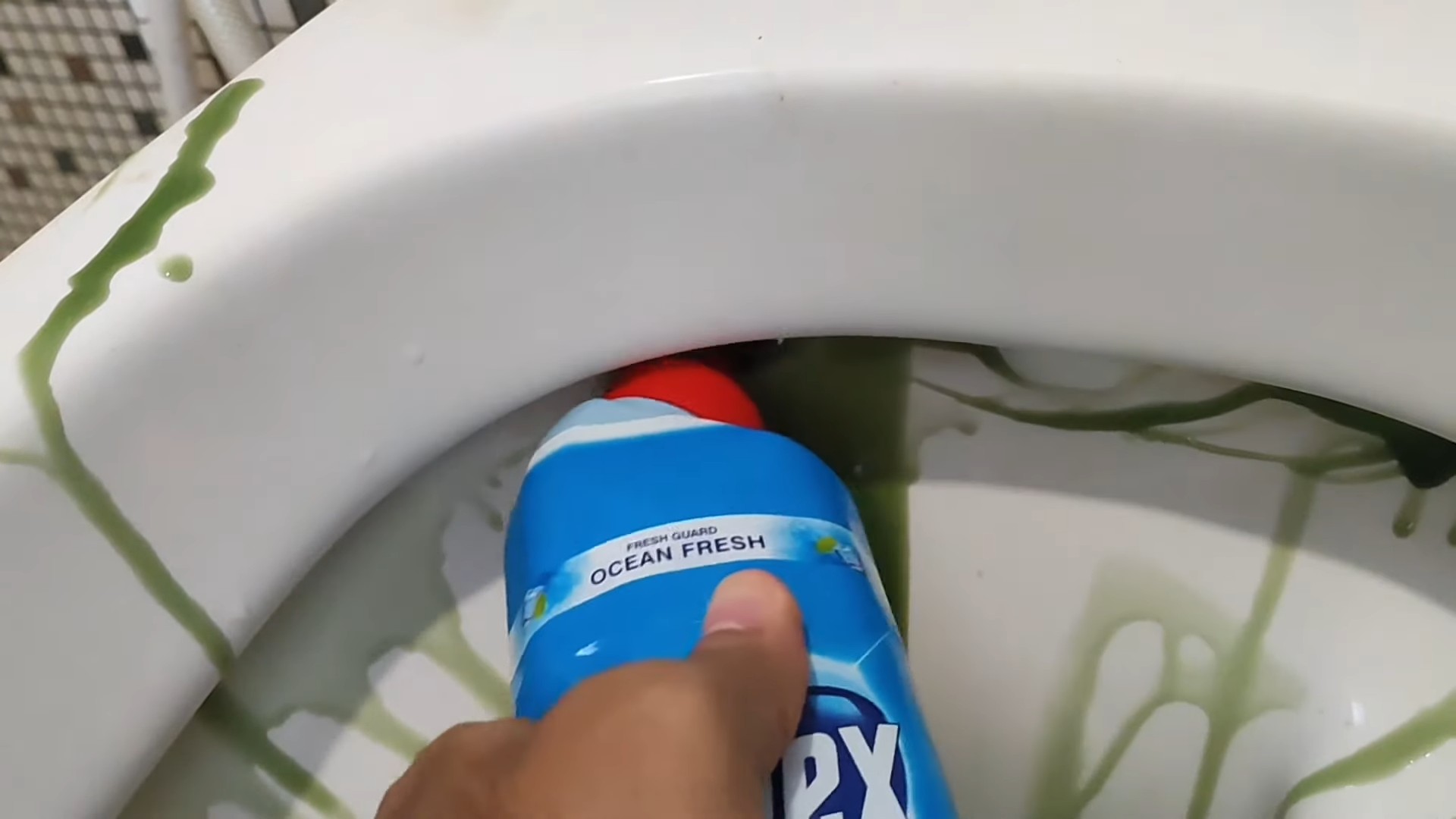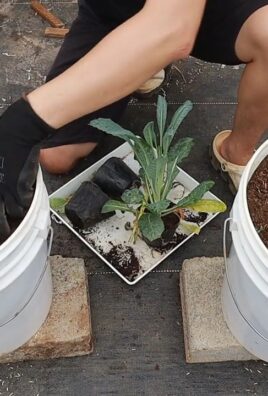Growing Tomatoes Healthy Plants can feel like a daunting task, but trust me, it doesn’t have to be! Have you ever dreamt of biting into a juicy, sun-ripened tomato, bursting with flavor, straight from your own backyard? Imagine the satisfaction of knowing you nurtured that deliciousness from a tiny seed to a vibrant, thriving plant. This isn’t just a pipe dream; it’s an achievable reality with a few simple tricks and DIY hacks.
Tomatoes have a rich history, originating in South America and gradually making their way into cuisines worldwide. They’ve become a staple in countless dishes, from simple salads to complex sauces. But beyond their culinary appeal, growing your own tomatoes connects you to a tradition of self-sufficiency and a deeper appreciation for the food we eat.
In today’s world, where we’re increasingly conscious of what we consume, growing tomatoes healthy plants at home offers a fantastic way to control the quality and freshness of your produce. Plus, let’s be honest, store-bought tomatoes often lack the intense flavor of homegrown varieties. This DIY guide will equip you with the knowledge and techniques to cultivate thriving tomato plants, even if you’re a complete beginner. We’ll cover everything from choosing the right varieties to troubleshooting common problems, ensuring you enjoy a bountiful harvest of delicious, healthy tomatoes. So, grab your gardening gloves, and let’s get started!

Growing Tomatoes: From Seedling to Superstar!
Hey there, fellow gardening enthusiasts! I’m so excited to share my tried-and-true methods for growing the juiciest, most flavorful tomatoes you’ve ever tasted. Forget those bland supermarket tomatoes – we’re talking homegrown goodness that will elevate your salads, sauces, and sandwiches to a whole new level. This guide is packed with tips and tricks I’ve learned over the years, so get ready to transform your garden into a tomato paradise!
Choosing the Right Tomato Variety
Before we even get our hands dirty, let’s talk about choosing the right tomato variety. This is crucial because different tomatoes thrive in different climates and have varying growth habits.
* Determinate vs. Indeterminate: This is the first big decision. Determinate tomatoes grow to a certain size and then produce all their fruit at once, making them ideal for canning. Indeterminate tomatoes, on the other hand, keep growing and producing fruit throughout the season. I personally prefer indeterminate varieties because I love having a continuous supply of fresh tomatoes.
* Heirloom vs. Hybrid: Heirloom tomatoes are open-pollinated varieties that have been passed down through generations. They often have unique flavors and colors, but they can be more susceptible to diseases. Hybrid tomatoes are bred for specific traits, such as disease resistance and higher yields. I usually grow a mix of both to get the best of both worlds.
* Consider Your Climate: If you live in a cooler climate, opt for early-maturing varieties like ‘Early Girl’ or ‘Siberian’. If you have long, hot summers, you can grow later-maturing varieties like ‘Brandywine’ or ‘San Marzano’.
* Think About Your Space: If you have limited space, consider growing bush varieties or dwarf tomatoes in containers.
Starting Your Tomato Seeds Indoors
Starting your tomato seeds indoors gives you a head start on the growing season, especially if you live in a colder climate. I usually start my seeds about 6-8 weeks before the last expected frost.
Materials You’ll Need:
* Tomato seeds (of course!)
* Seed starting mix
* Seed starting trays or small pots
* A heat mat (optional, but highly recommended)
* A grow light (also optional, but very helpful)
* A spray bottle
Step-by-Step Instructions:
1. Prepare Your Seed Starting Trays: Fill your seed starting trays or small pots with seed starting mix. Gently tap the trays to settle the mix.
2. Sow the Seeds: Make a small indentation in the soil (about 1/4 inch deep) and drop in 2-3 tomato seeds. Cover the seeds with soil and gently water with a spray bottle.
3. Provide Warmth and Light: Place the trays on a heat mat and under a grow light. The heat mat will help the seeds germinate faster, and the grow light will prevent the seedlings from becoming leggy. If you don’t have a grow light, place the trays in a sunny window, but be sure to rotate them regularly to prevent them from leaning towards the light.
4. Keep the Soil Moist: Water the seedlings regularly with a spray bottle, keeping the soil consistently moist but not soggy.
5. Thin the Seedlings: Once the seedlings have their first true leaves (the second set of leaves), thin them out by snipping off the weaker seedlings at the soil line. Leave only one strong seedling per cell or pot.
6. Harden Off the Seedlings: About a week before you plan to transplant the seedlings outdoors, start hardening them off. This means gradually exposing them to outdoor conditions. Start by placing them outside for an hour or two each day, gradually increasing the amount of time they spend outdoors.
Preparing Your Garden Bed
Now that your seedlings are growing strong, it’s time to prepare your garden bed. Tomatoes need plenty of sunlight and well-drained soil.
Things to Consider:
* Sunlight: Tomatoes need at least 6-8 hours of sunlight per day. Choose a location in your garden that gets plenty of sun.
* Soil: Tomatoes prefer well-drained soil that is rich in organic matter. If your soil is heavy clay or sandy, amend it with compost or other organic matter.
* pH: Tomatoes prefer a soil pH of 6.0-6.8. You can test your soil pH with a soil testing kit.
* Crop Rotation: Avoid planting tomatoes in the same spot year after year, as this can lead to a buildup of soilborne diseases.
Step-by-Step Instructions:
1. Clear the Area: Remove any weeds, rocks, or debris from the area where you plan to plant your tomatoes.
2. Amend the Soil: Dig in plenty of compost or other organic matter to improve the soil’s drainage and fertility. I like to add a generous amount of well-rotted manure as well.
3. Test the Soil pH: If necessary, adjust the soil pH to the ideal range of 6.0-6.8. You can add lime to raise the pH or sulfur to lower it.
4. Create Planting Holes: Dig holes that are slightly larger than the root balls of your tomato seedlings. Space the holes about 2-3 feet apart, depending on the variety of tomato you are growing.
Transplanting Your Tomato Seedlings
The moment we’ve been waiting for! Transplanting your tomato seedlings into the garden is a crucial step.
Step-by-Step Instructions:
1. Water the Seedlings: Water your tomato seedlings thoroughly before transplanting them. This will help them to adjust to their new environment.
2. Remove the Seedlings from Their Containers: Gently remove the seedlings from their containers, being careful not to damage the roots. If the roots are tightly bound, gently loosen them with your fingers.
3. Plant the Seedlings Deep: Plant the seedlings deep, burying the stem up to the first set of leaves. This will encourage the plant to develop more roots along the buried stem, resulting in a stronger, healthier plant.
4. Add Support: Insert a stake, cage, or trellis next to each seedling to provide support as it grows. I prefer using tomato cages because they are easy to install and provide good support.
5. Water Thoroughly: Water the newly transplanted seedlings thoroughly.
6. Mulch: Apply a layer of mulch around the base of the plants to help retain moisture, suppress weeds, and regulate soil temperature. I like to use straw or shredded leaves as mulch.
Caring for Your Tomato Plants
Once your tomato plants are in the ground, it’s important to provide them with proper care to ensure a bountiful harvest.
Watering:
* Water your tomato plants deeply and regularly, especially during hot, dry weather. Aim to water at the base of the plant to avoid wetting the foliage, which can lead to disease.
* Water early in the morning to allow the foliage to dry before nightfall.
* Use a soaker hose or drip irrigation system to deliver water directly to the roots.
Fertilizing:
* Fertilize your tomato plants regularly with a balanced fertilizer. I like to use a fertilizer that is specifically formulated for tomatoes.
* Fertilize every 2-3 weeks, following the instructions on the fertilizer label.
* Avoid over-fertilizing, as this can lead to excessive foliage growth and reduced fruit production.
Pruning:
* Prune your tomato plants regularly to improve air circulation and encourage fruit production.
* Remove suckers (the small shoots that grow in the crotch between the main stem and the branches) to direct the plant’s energy towards fruit production.
* Remove any yellowing or diseased leaves.
Pest and Disease Control:
* Inspect your tomato plants regularly for pests and diseases.
* Common tomato pests include aphids, tomato hornworms, and whiteflies.
* Common tomato diseases include early blight, late blight, and blossom end rot.
* Use organic pest control methods whenever possible, such as insecticidal soap or neem oil.
* Remove any diseased leaves or plants immediately to prevent the spread of disease.
* Ensure good air circulation around your plants to help prevent disease.
Dealing with Common Tomato Problems
Even with the best care, you might encounter some common tomato problems. Here’s how I tackle them:
* Blossom End Rot: This is caused by a calcium deficiency. Ensure consistent watering and consider adding calcium to the soil. I use crushed eggshells mixed into the soil around the plants as a natural calcium boost.
* Tomato Hornworms: These large green caterpillars can decimate your plants quickly. Handpick them off your plants or use Bacillus thuringiensis (Bt), a natural insecticide.
* Early Blight: This fungal disease causes dark spots on the leaves. Remove affected leaves and apply a copper fungicide.
* Cracking: This is often caused by inconsistent watering. Try to water your plants regularly and

Conclusion
So, there you have it! Growing tomatoes with healthy plants doesn’t have to be a daunting task. By implementing these simple yet effective DIY tricks, you’re not just growing tomatoes; you’re cultivating a thriving garden and enjoying the unparalleled satisfaction of harvesting your own delicious, sun-ripened fruit.
This isn’t just about saving money (though that’s certainly a perk!). It’s about understanding the needs of your plants, fostering a deeper connection with nature, and taking control of the quality of your food. Think of the vibrant flavors, the juicy textures, and the sheer pride you’ll feel when you serve a salad made with tomatoes you nurtured from seedling to table.
But the benefits extend beyond the culinary. Gardening is a fantastic stress reliever, a great way to get some exercise, and a rewarding hobby that can be enjoyed by people of all ages. And when you share your homegrown tomatoes with friends and family, you’re sharing a little piece of your heart and hard work.
Don’t be afraid to experiment! Try different varieties of tomatoes to find your favorites. Some gardeners swear by heirloom varieties for their unique flavors and colors, while others prefer hybrid varieties for their disease resistance and high yields. You can also adjust the DIY tricks to suit your specific climate and soil conditions. For example, if you live in a particularly hot and dry area, you might want to add more organic matter to your soil to help it retain moisture. Or, if you’re dealing with a lot of pests, you might want to try companion planting with herbs like basil or marigolds, which are known to repel insects.
Consider variations on the DIY supports we discussed. Instead of traditional tomato cages, you could try the Florida weave method, which involves weaving twine between stakes to support the plants. Or, you could build a simple trellis out of bamboo or other readily available materials. The possibilities are endless!
The key is to observe your plants closely and adjust your approach as needed. Pay attention to the color of the leaves, the size and shape of the fruit, and any signs of pests or diseases. The more you learn about your plants, the better you’ll be able to care for them.
We truly believe that anyone can grow delicious, healthy tomatoes with a little bit of knowledge and effort. So, don’t be intimidated! Start small, be patient, and most importantly, have fun.
We’re confident that these DIY tricks will make a significant difference in your tomato-growing success. Now, it’s your turn to put them to the test. We encourage you to try these methods in your own garden and share your experiences with us. Let us know what worked well for you, what challenges you faced, and any other tips or tricks you’ve discovered along the way. Together, we can create a community of tomato-growing enthusiasts who are passionate about sharing their knowledge and helping each other succeed.
Share your photos, your stories, and your questions in the comments section below. We can’t wait to hear from you and see the amazing tomatoes you’re growing! Happy gardening!
Frequently Asked Questions (FAQ)
What if I don’t have a lot of space for a garden?
That’s perfectly fine! Many tomato varieties thrive in containers. Choose a large pot (at least 15 gallons) with good drainage and use a high-quality potting mix. Dwarf or bush varieties are particularly well-suited for container gardening. You can even grow tomatoes on a balcony or patio. Just make sure they get at least 6-8 hours of sunlight per day. Remember to water container tomatoes more frequently than those grown in the ground, as they tend to dry out faster.
How often should I water my tomato plants?
Watering frequency depends on several factors, including the weather, soil type, and the size of your plants. As a general rule, water deeply and less frequently, rather than shallowly and often. This encourages the roots to grow deeper, making the plants more resilient to drought. Check the soil moisture by sticking your finger about an inch or two into the soil. If it feels dry, it’s time to water. Avoid watering the foliage, as this can promote fungal diseases. Instead, water at the base of the plant. During hot, dry weather, you may need to water daily, while during cooler, wetter weather, you may only need to water every few days.
What kind of fertilizer should I use for my tomato plants?
Tomatoes are heavy feeders, so they need regular fertilization to produce abundant fruit. Start with a balanced fertilizer (e.g., 10-10-10) when planting, and then switch to a fertilizer that’s higher in phosphorus (the middle number) once the plants start to flower. Phosphorus promotes fruit development. You can use a granular fertilizer or a liquid fertilizer. Follow the instructions on the package carefully, as over-fertilizing can be harmful to your plants. Organic options like compost tea or fish emulsion are also excellent choices.
How do I deal with pests and diseases on my tomato plants?
Prevention is key when it comes to pests and diseases. Choose disease-resistant varieties, practice good sanitation (remove any fallen leaves or debris), and water at the base of the plants to avoid wetting the foliage. If you do encounter pests, try to identify them correctly before taking action. Many common tomato pests, such as aphids and whiteflies, can be controlled with insecticidal soap or neem oil. For fungal diseases like early blight or Septoria leaf spot, you can try a copper fungicide. Always follow the instructions on the product label carefully. Companion planting with herbs like basil or marigolds can also help to repel pests.
When is the best time to harvest my tomatoes?
The best time to harvest tomatoes is when they are fully colored and slightly soft to the touch. The exact color will depend on the variety. Gently twist the tomato off the vine, leaving the stem attached. If the tomato is difficult to remove, it’s probably not quite ripe yet. You can also harvest tomatoes that are slightly underripe and allow them to ripen indoors. Place them in a single layer on a countertop, away from direct sunlight.
My tomato plants are growing tall and leggy, but they’re not producing many tomatoes. What’s wrong?
This is often a sign that your plants are not getting enough sunlight. Tomatoes need at least 6-8 hours of sunlight per day to thrive. If your plants are shaded by trees or buildings, you may need to move them to a sunnier location. Another possible cause is over-fertilizing with nitrogen. Nitrogen promotes leafy growth, but it can inhibit fruit production. Make sure you’re using a fertilizer that’s higher in phosphorus than nitrogen. Pruning suckers (the small shoots that grow between the main stem and the branches) can also help to improve air circulation and encourage fruit production.
Can I save seeds from my homegrown tomatoes?
Yes, you can save seeds from heirloom tomatoes, but not from hybrid varieties. Hybrid tomatoes are bred to have specific characteristics, and their seeds will not produce plants that are true to type. To save seeds from heirloom tomatoes, allow the tomatoes to fully ripen on the vine. Then, scoop out the seeds and pulp and place them in a jar with a little bit of water. Let the mixture ferment for a few days, stirring occasionally. This will help to remove the gelatinous coating from the seeds. After a few days, rinse the seeds thoroughly and spread them out on a paper towel to dry. Once they’re completely dry, store them in an airtight container in a cool, dark place.




Leave a Comment